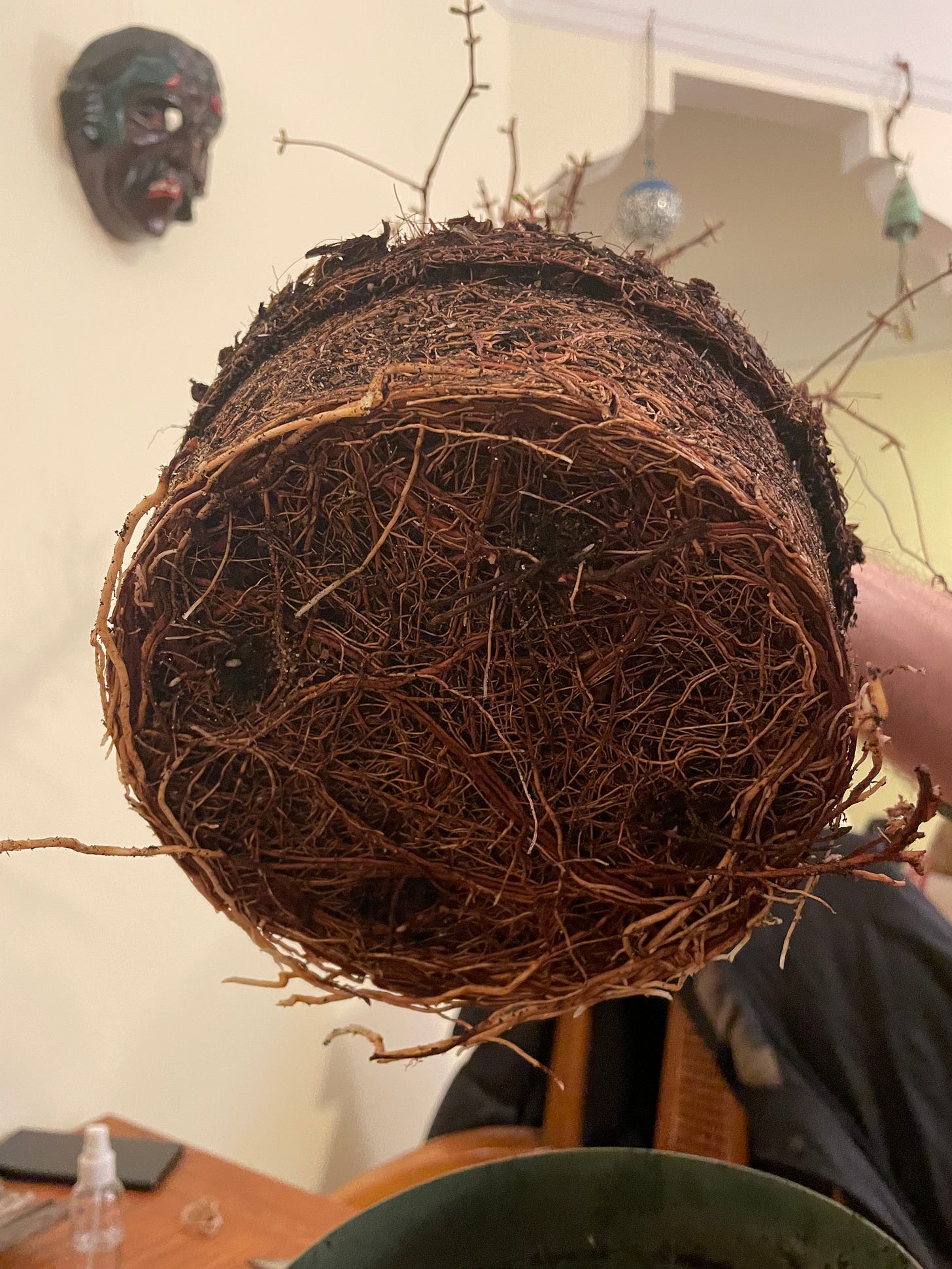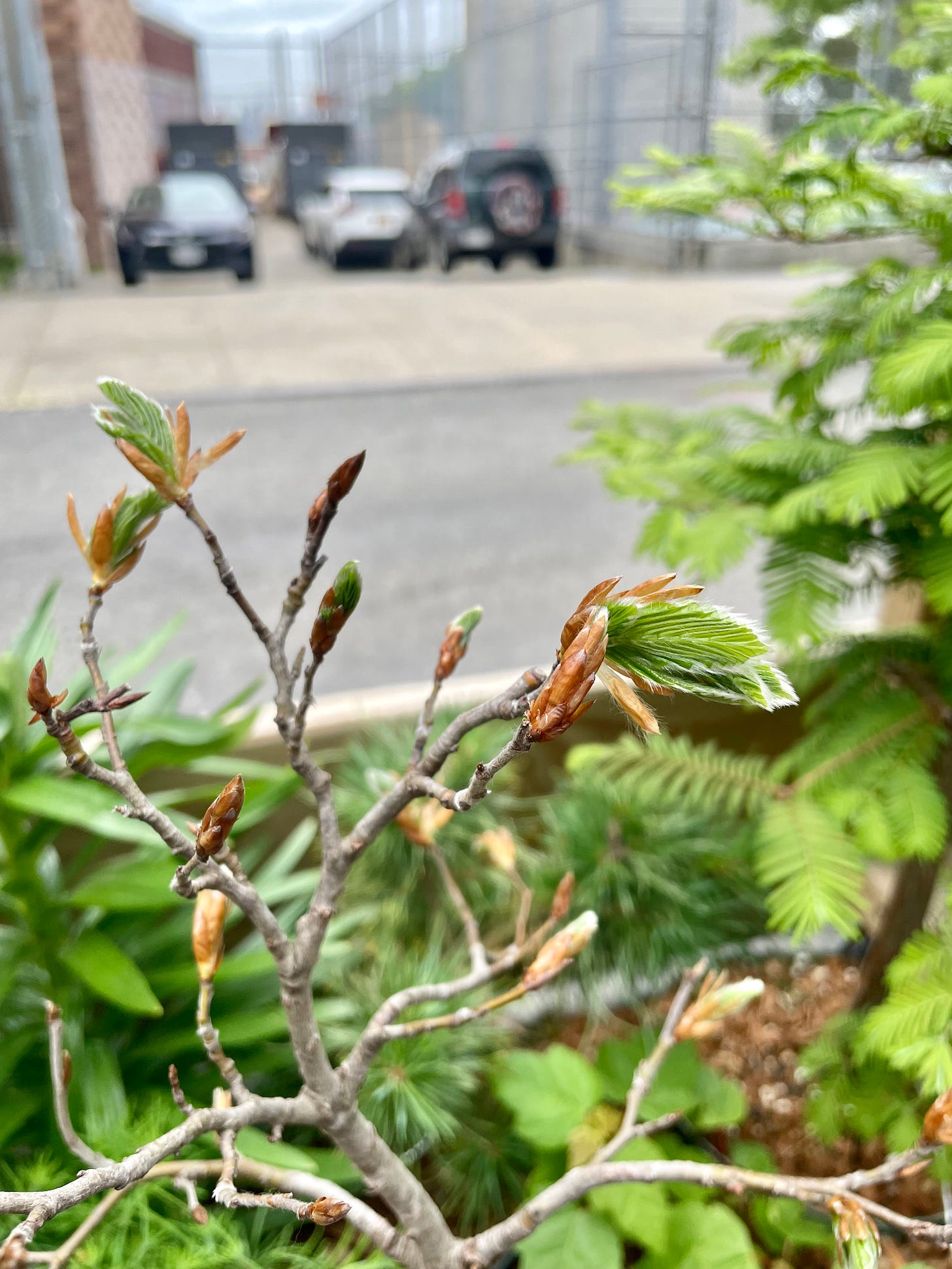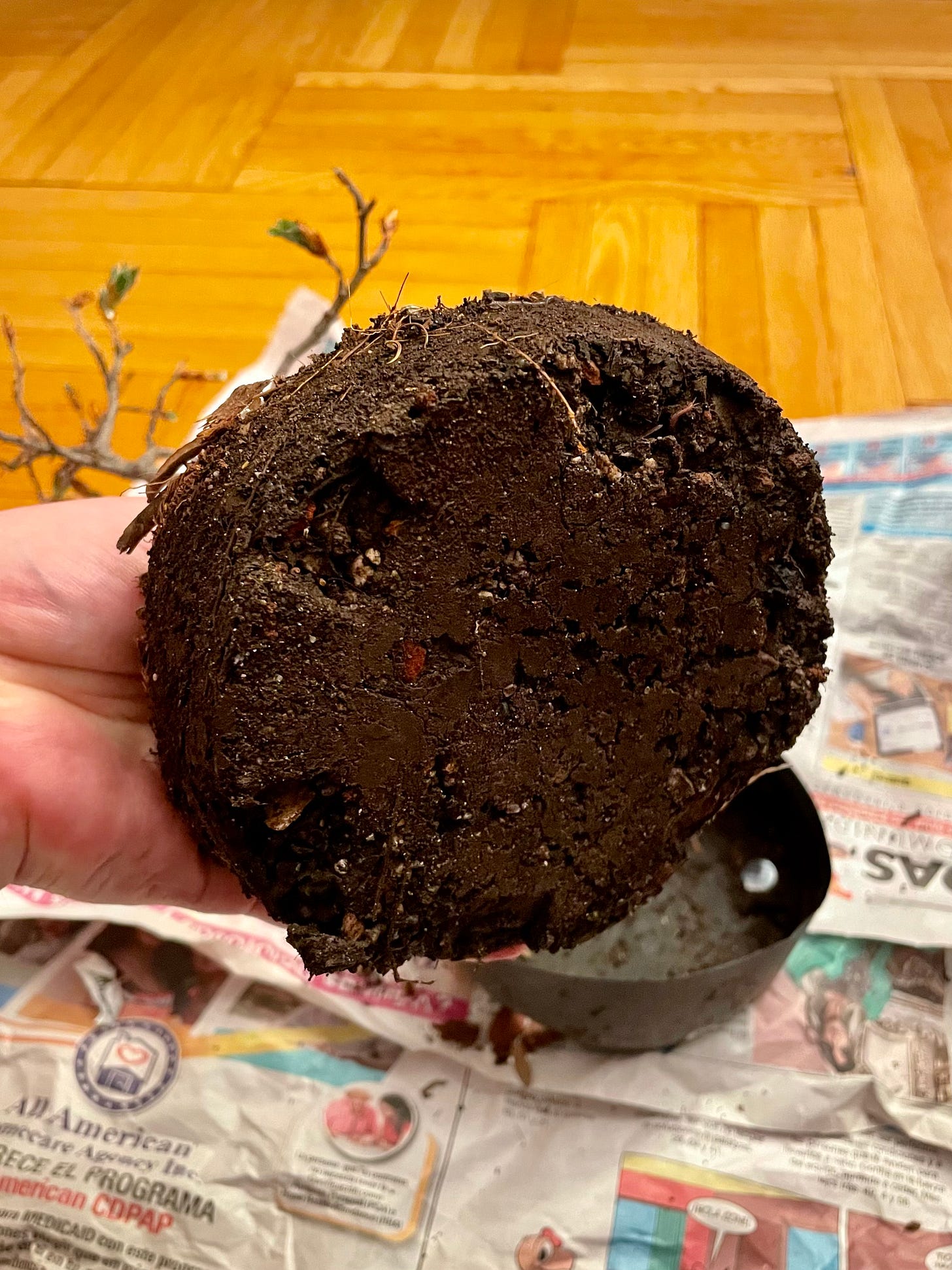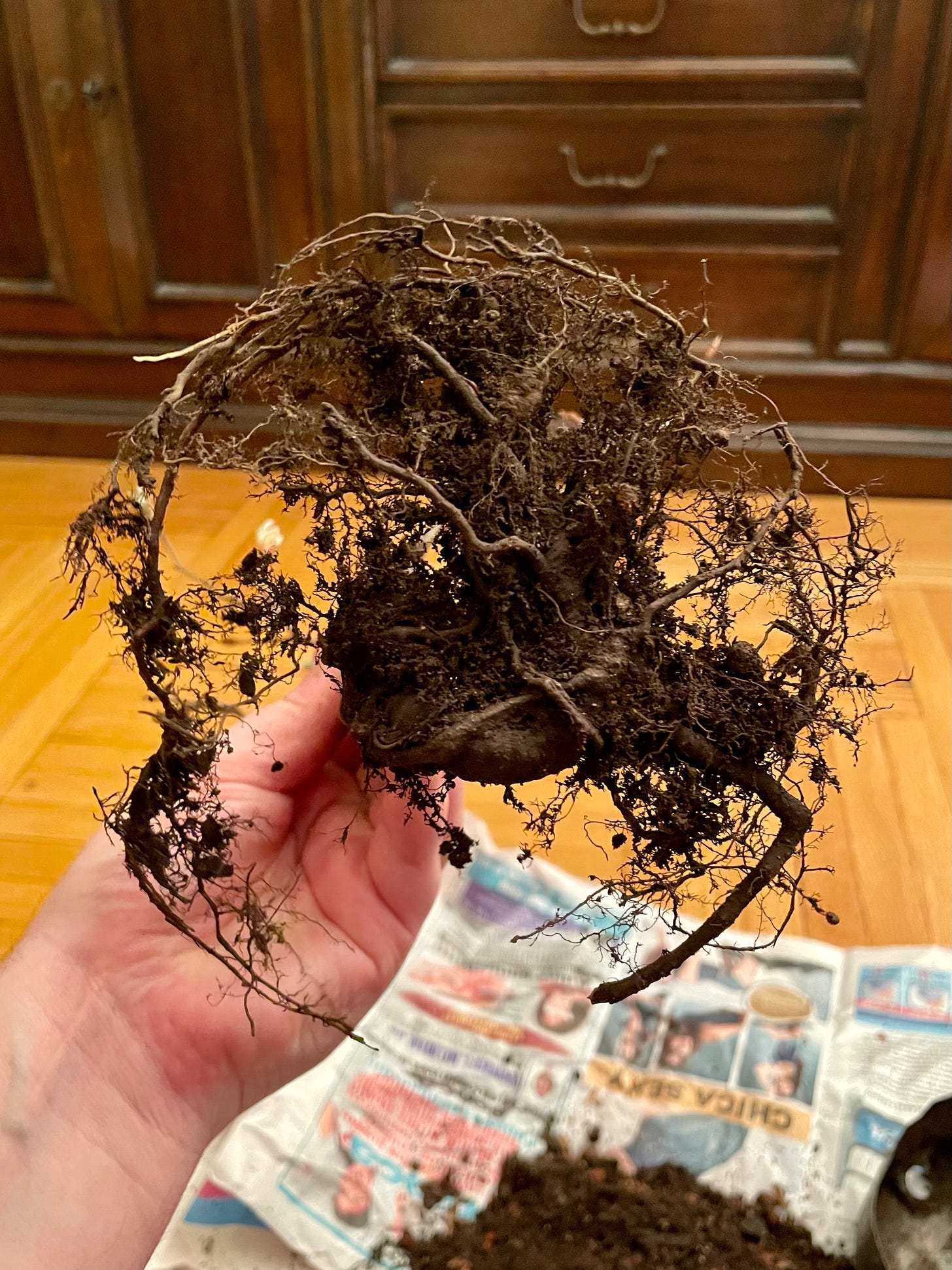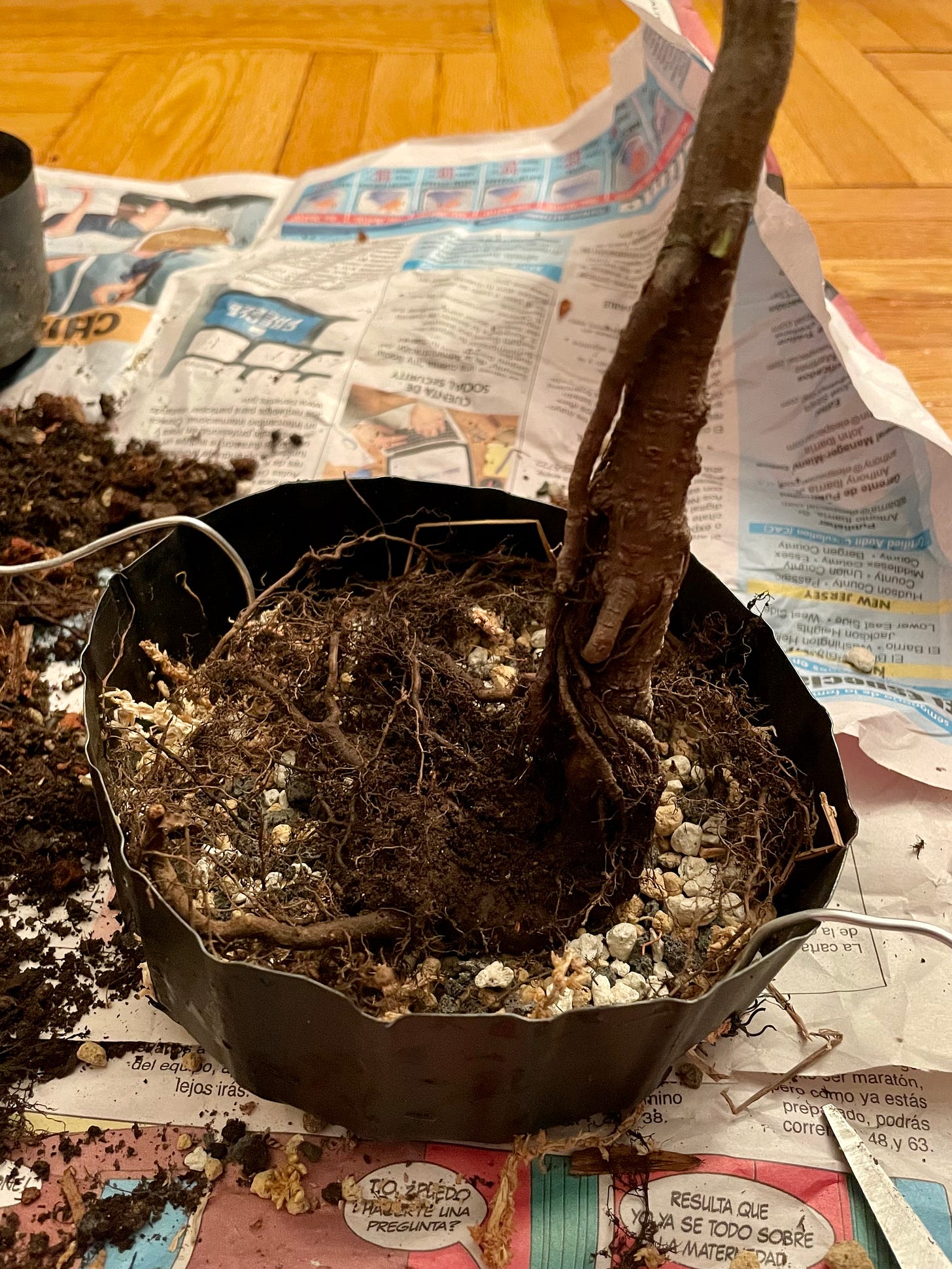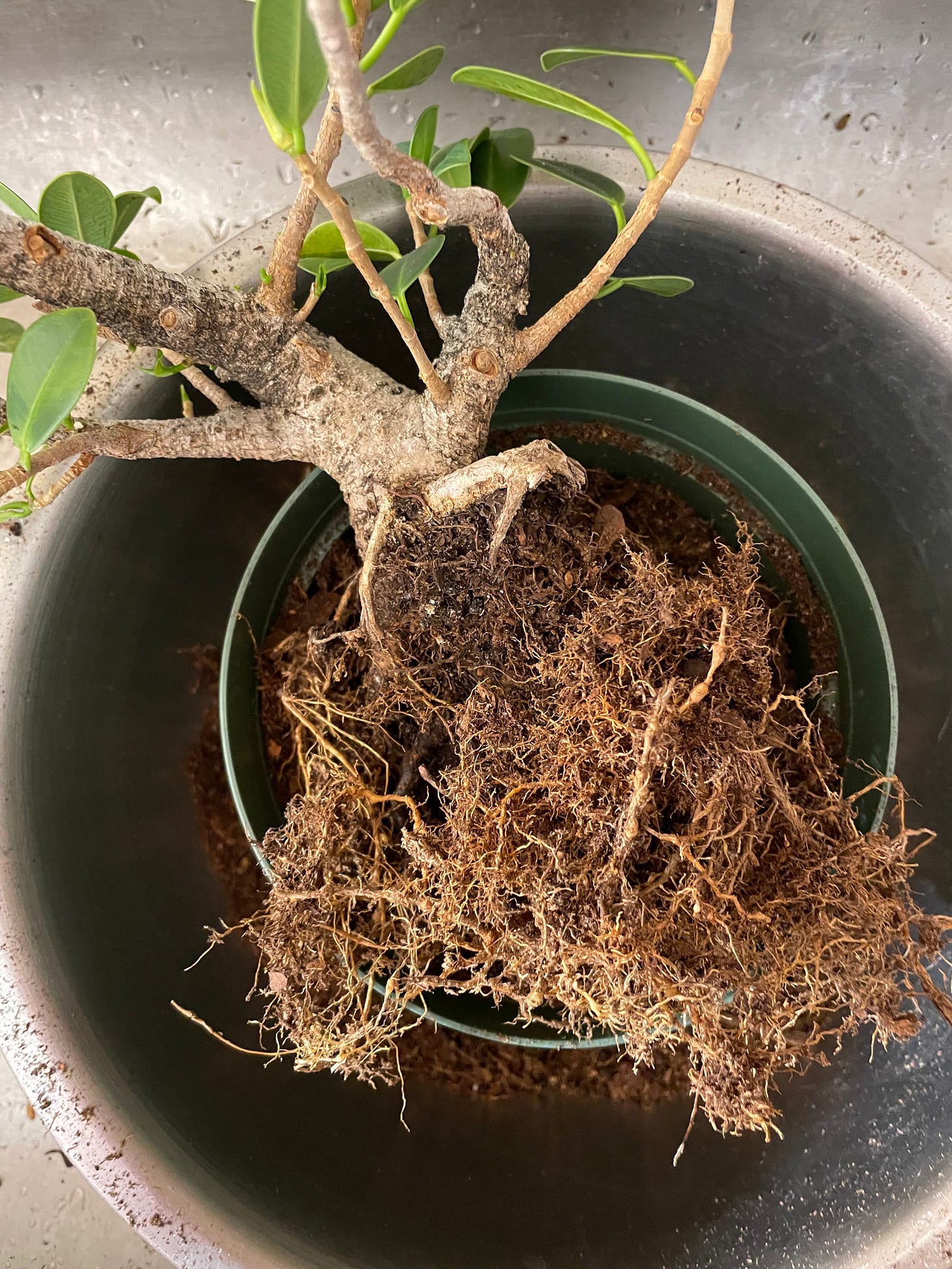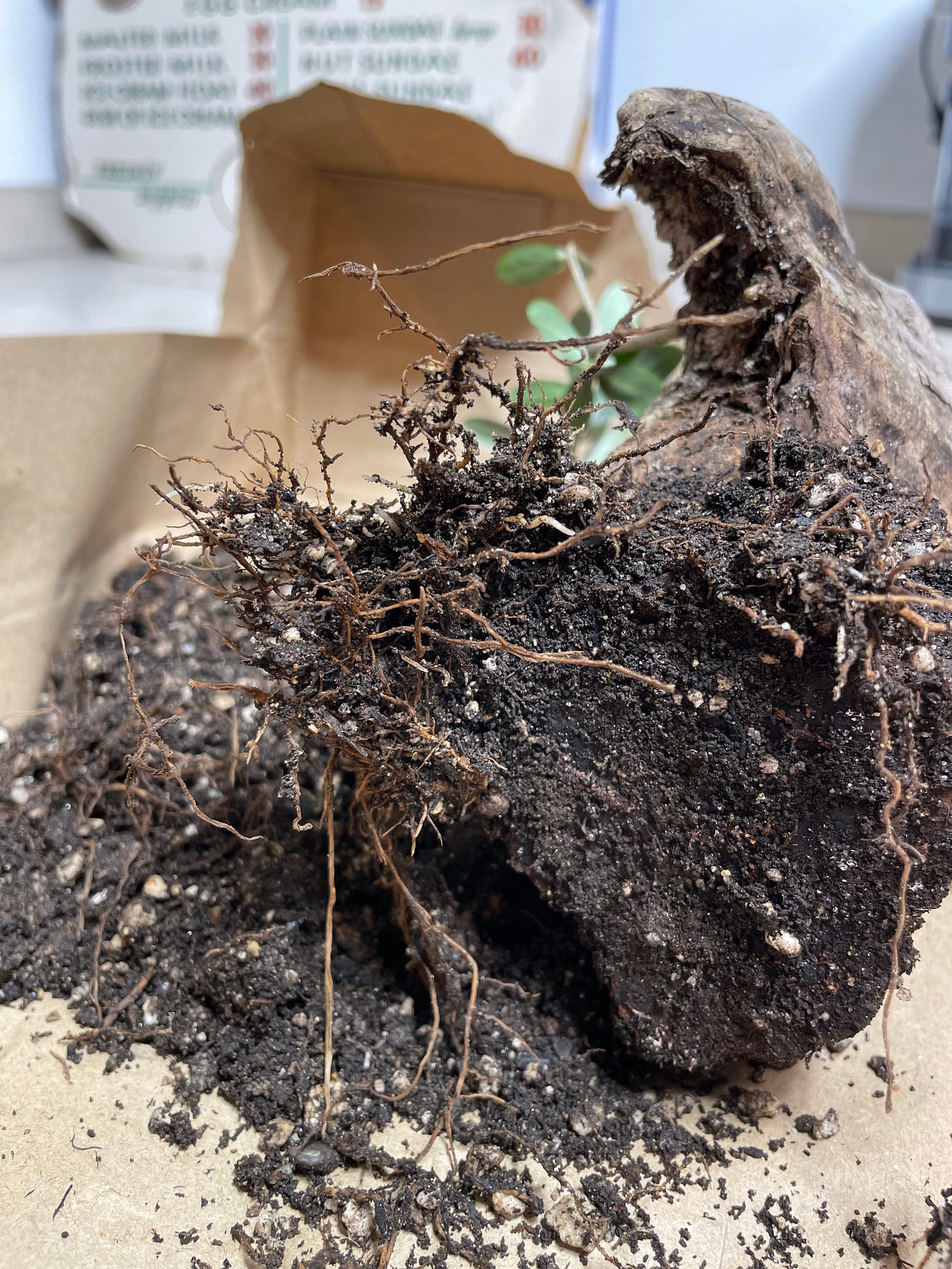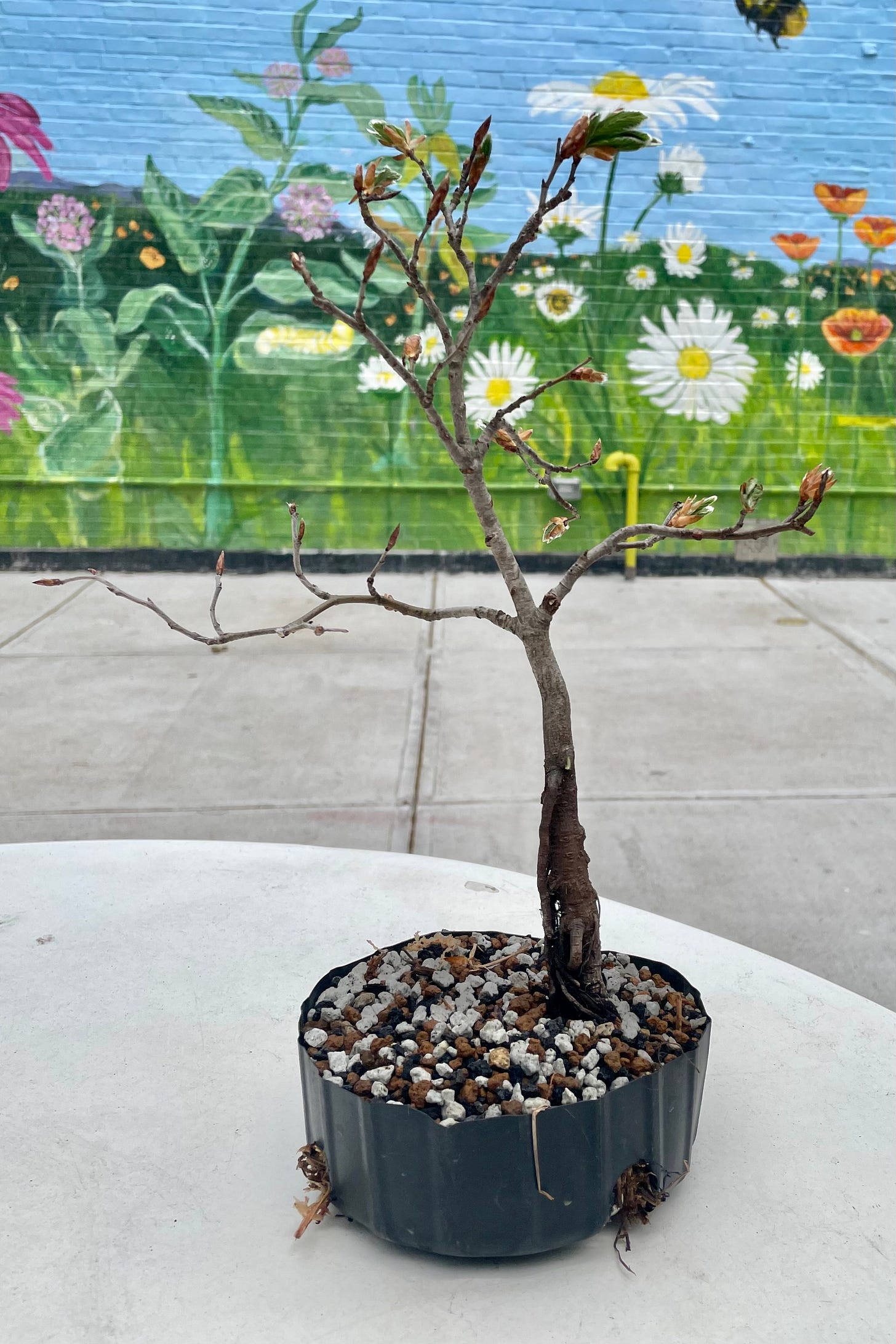The last repot
Soil rehab, root repair, and taking stock of the full tree.
Perhaps the most traumatic thing you can do to a tree is dig it up and mess with its roots. In bonsai, you do just that every two to five years.
There are many reasons to repot a tree. Roots, like branches, need pruning and shaping to fit bonsai proportions. Soil breaks down over time and must be replaced. One of the most important reasons, I think, is the rare chance to take stock of a tree as a whole organism, from root to leaf tip—out of the ground and in your hands—so you can assess its health and growing trajectory. If you ignore the roots, you’re missing key parts of a tree’s story. If the root system fails, the tree dies.
With temperate trees, there’s a narrow window of time to carry out this great injury: in spring, as the tree’s new buds just begin to swell and extend. This is when the roots are focused on vigorous growth and the tree is pumping up for the season. The tree is strong, healthy. Feeling itself. Which makes it the perfect time to subject the tree to the trauma of root work.
My beech is the late bloomer of my collection, so I spend the better part of spring wondering if it’s dead. This week the buds began to pop with downy puffs of green beneath papery winter shells. Finally, a chance to take a look at its roots for the very first time.
I bought this tree through a Facebook auction from a guy who did the initial styling. I’ve since tweaked and removed his wiring but otherwise left the tree as-is. Those lower two rows of “handlebar” branches will cause unsightly bulges in time. I’m not sure how to fix the problem. Meanwhile, the only thing I can tell about the roots is that there aren’t many of them.
Does it look like a brownie to you too? Maybe a puck of ground espresso? This loamy soil was a compacted brick. Roots need air as much as water—that’s how a plant breathes!—and in a poorly draining soil like this, they don’t get much opportunity.
It amazes me that something so resilient as a tree can be sustained by just a few fragile roots.
The dawn redwood pictured at the top of this post had so many roots they were growing out of the pot. I had to saw off the bottom with a bread knife, as if it were a layer of cake. By comparison these beech roots are…adequate enough to keep the tree alive, but not winning any beauty contests. The good news is they showed no sign of rot or disease, and the ratio of fine feeder roots to thick woody ones was high. I pruned a few dead and downward-growing root tips but otherwise left the roots intact.
The free-draining bonsai soil I’ve been using in all my repots won’t compact the way organic garden soils do, so the roots will have room to breathe. When a root tip runs into a jagged chunk of pumice or lava rock, it breaks and branches. Over time, that behavior should encourage a dense rootball. The more roots, the more energy a tree has to grow—and the more severely I can wound it next time.
I am learning that roots vary from family to family. Landscapers warn homeowners against planting fig trees near houses or septic systems because the muscular roots can break through concrete. The ficus roots pictured above aren’t quite that strong, but the dense rootball has given this tree the vigor to grow like a weed. It reveals new leaves every day.
Olive roots, by contrast, take the form of flaccid angel hair pasta that break if you look at them wrong. It’s a miracle they work as well as they do. Olive trees can live for thousands of years and survive long periods of drought. All on a foundation of…this. There’s no such thing as an ideal root system. Just a root system that’s well adapted to a tree’s needs.
I have a couple tropical trees I may repot later this summer, but otherwise I won’t be doing any real root work until next March. I’ll miss it. Though it’s stressful for the trees, each repot brought me peace. I know my trees better. I’ve set them up for a better growing season.
In bonsai, pain is inevitable. So make it useful.
Tree reading
Is a tree’s metabolism limited by available light or the demands of its cell growth? Predictive forestry models assume the former; new research suggests it may be the latter—a problem in a warming climate. [Phys.org]
There’s a new record-holder for World’s Largest Organism, surpassing blue whales, fungal colonies, and sprawling clonal tree stands. It’s a funky hybrid seagrass, and it’s the size of Washington DC. [Science]

